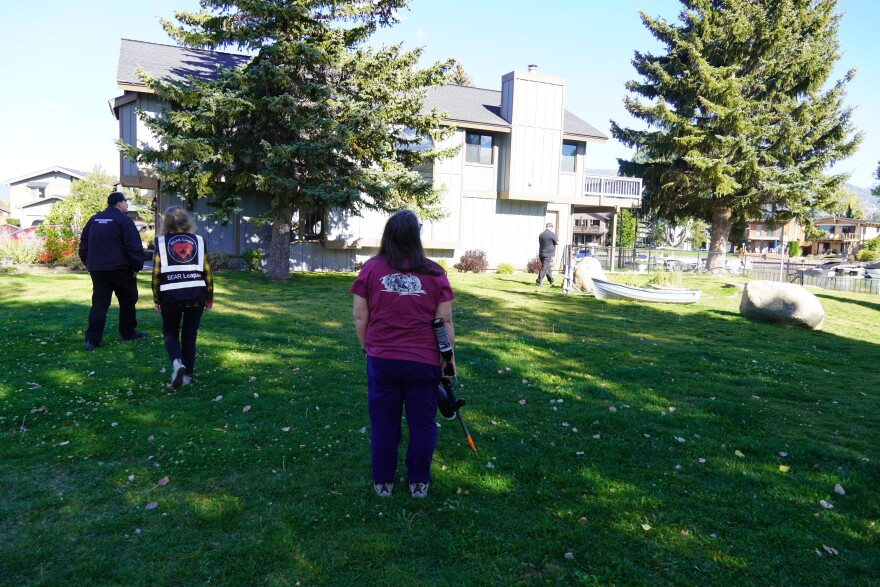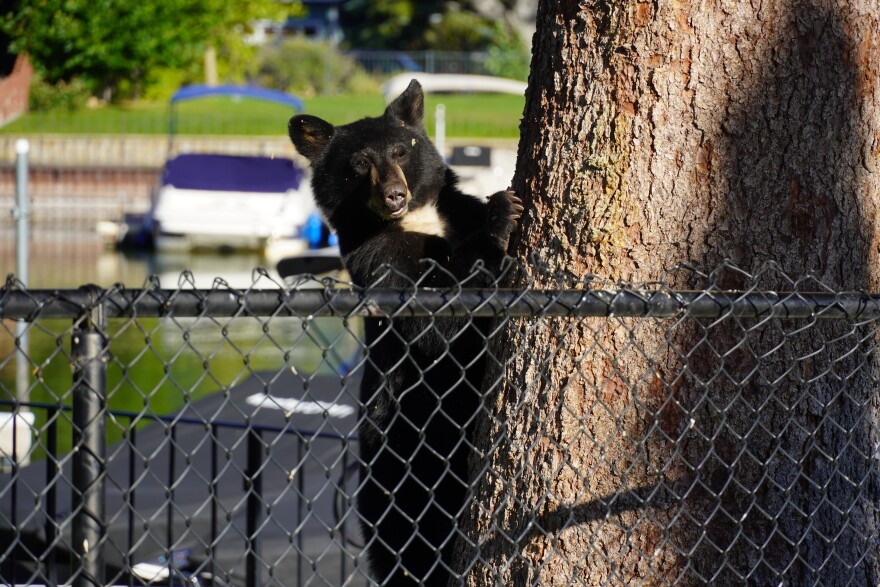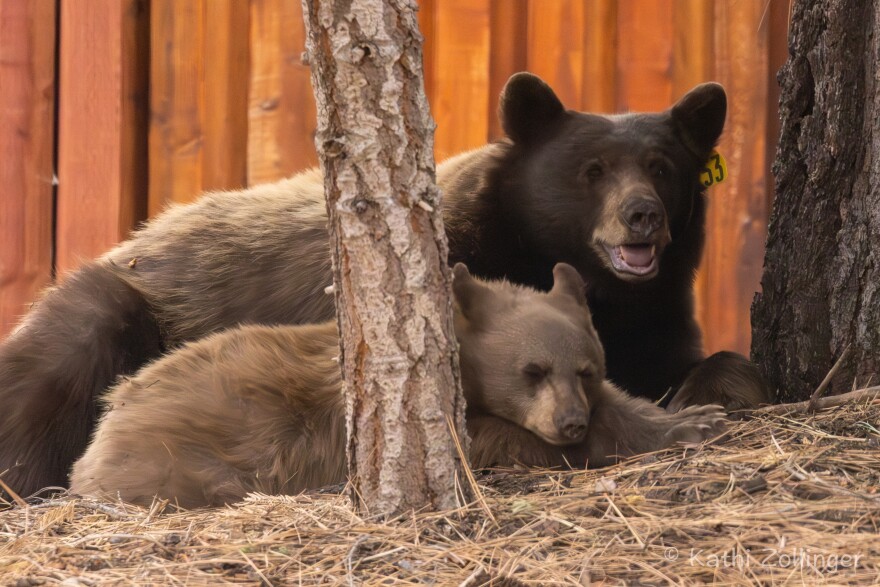For years, Hope has roamed the Tahoe Keys neighborhood, breaking into homes and getting into trash cans in search of food. Her cub, Bounce, born this past winter, is following her lead. Now, California wildlife officials say enough is enough.
The California Department of Fish and Wildlife (CDFW) has approved a plan to capture and euthanize Hope, citing repeated break-ins and escalating property damage. But local advocates are fighting to save her, arguing that humans are the ones who need to change.
One recent afternoon, a crowd gathered in a Tahoe Keys backyard. High up in a pine tree sat a black bear and her cub — not Hope and Bounce — but a reminder of how common these encounters have become.
“They’re up there huffing and puffing,” said Kathi Zollinger, a volunteer with the BEAR League, a nonprofit that educates locals about living safely alongside bears.
Zollinger and her team had rushed to the scene after receiving a hotline call from a homeowner. Her job is to scare the bears away without hurting them, usually with paintball guns, loud noises, or simply waiting them out.
“We’re using paintball guns and yelling at them and doing other things to haze them,” Zollinger said. “The goal isn’t to harm them, just to get them back into the forest.”

That day, Zollinger waited for hours as the bears eventually climbed down and disappeared. It’s part of her routine in a community where bears often find themselves right in people’s backyards.
Hope, however, has been on the department’s radar for years.
“This summer alone, she’s broken into more than a dozen homes,” said Peter Tira, a spokesperson for the California Department of Fish and Wildlife. “We’ve seen broken windows and tens of thousands of dollars in property damage.”
Tira explained that bears are drawn to human food because it’s easy to find and packed with calories. Once they get used to it, they keep coming back.
California has about 60,000 black bears, and as more homes are built in forested areas, the chances of running into one are only increasing.
The department plans to euthanize Hope if they are able to safely capture her. Her cub, Bounce, would be taken in and rehabilitated.
Many residents don’t agree with that plan.
Brady Hodge, who has lived in the Tahoe Keys for 50 years, remembers calling the BEAR League after a bear climbed into his house through an open window.
“They were out right away,” he said. “Very responsive.”
He believes the solution isn’t killing the bears but teaching people to be more careful, closing windows, locking doors, and keeping trash secured.
“If you can’t do that, you’re not giving them a fair shake,” Hodge said. “The people that don’t like the bears probably shouldn’t be here.”
When he heard about the plan to kill Hope, he was frustrated.
“I’m totally against it,” he said. “They’re beautiful animals, and they won’t hurt you if you respect them.”

For now, volunteers like Zollinger are still trying to protect Tahoe’s bears — including Hope and Bounce — while also helping neighbors understand how to live safely alongside them.
Two hours later, as the sun began to set, the two bears in the tree finally climbed down and slipped over a fence, disappearing into the brush. Zollinger followed at a distance, making sure they stayed out of trouble and away from homes.
Her work was done for the day, but she knows there will be more calls, more bears in backyards, and more tough questions about how people and wildlife can share the same space in Tahoe.




